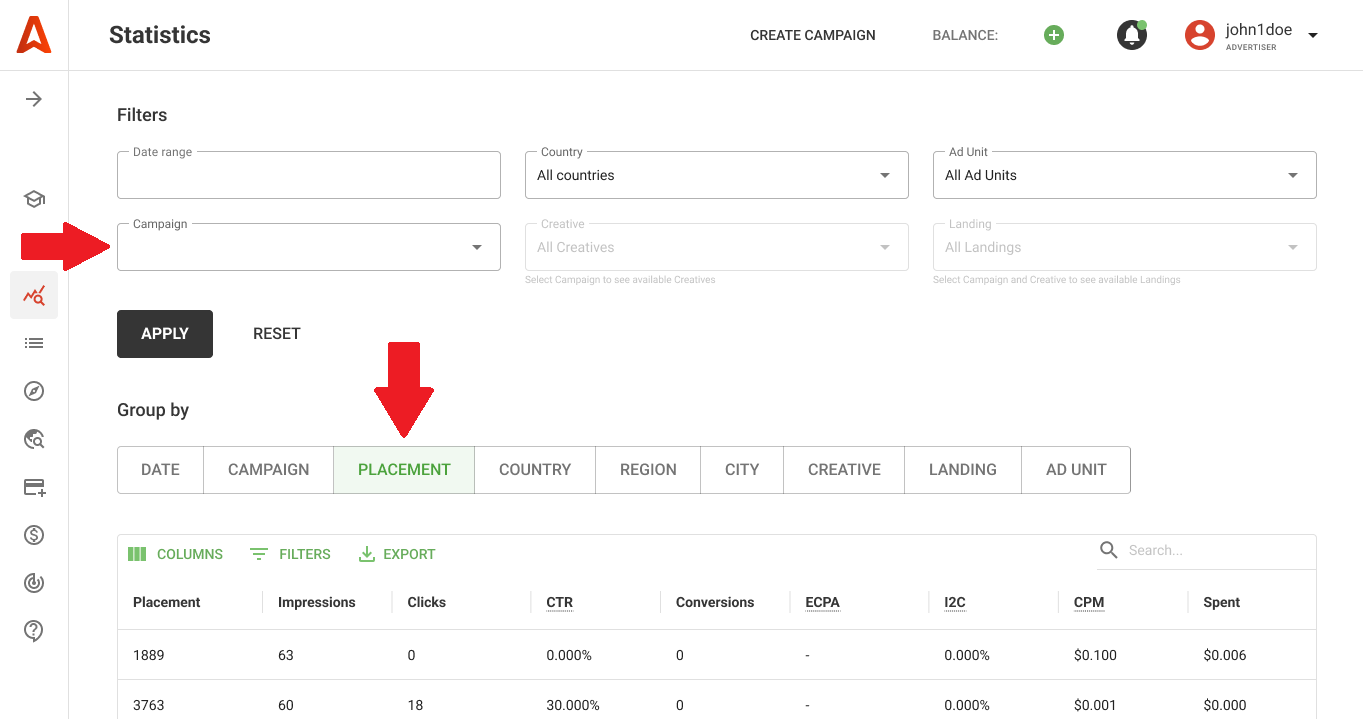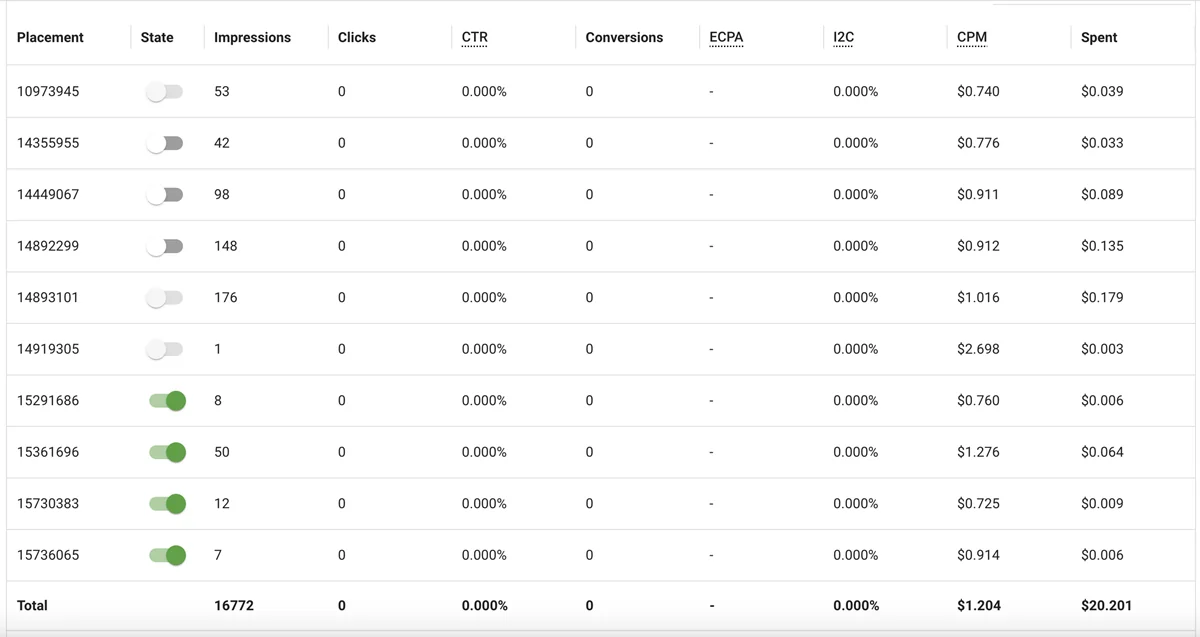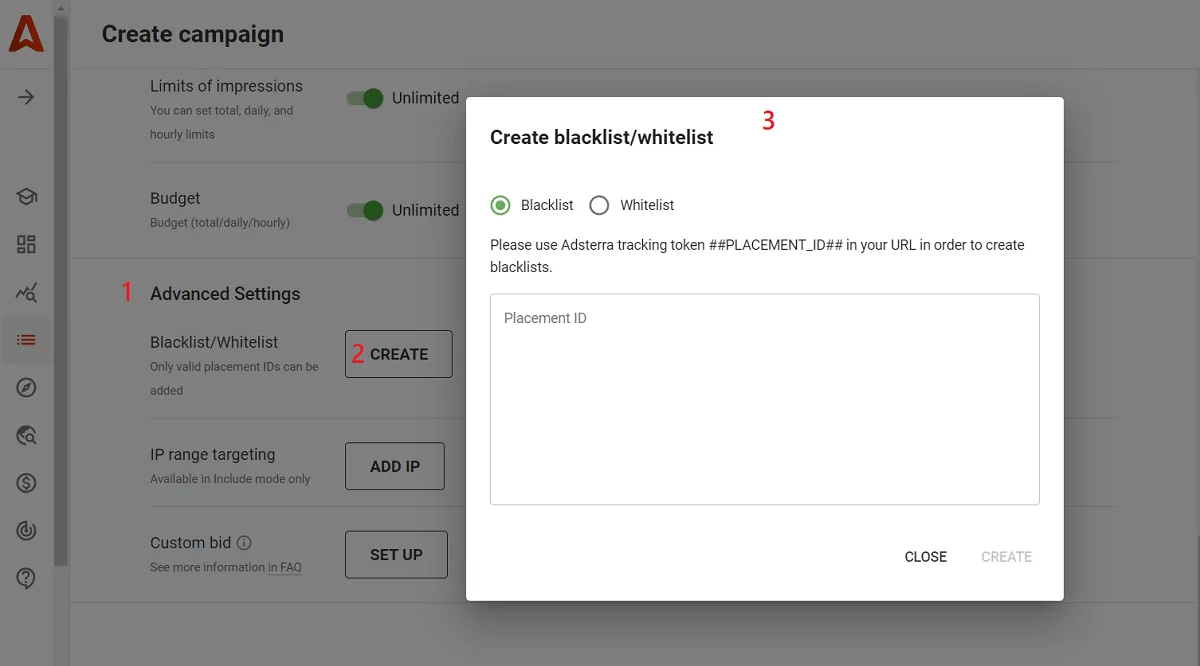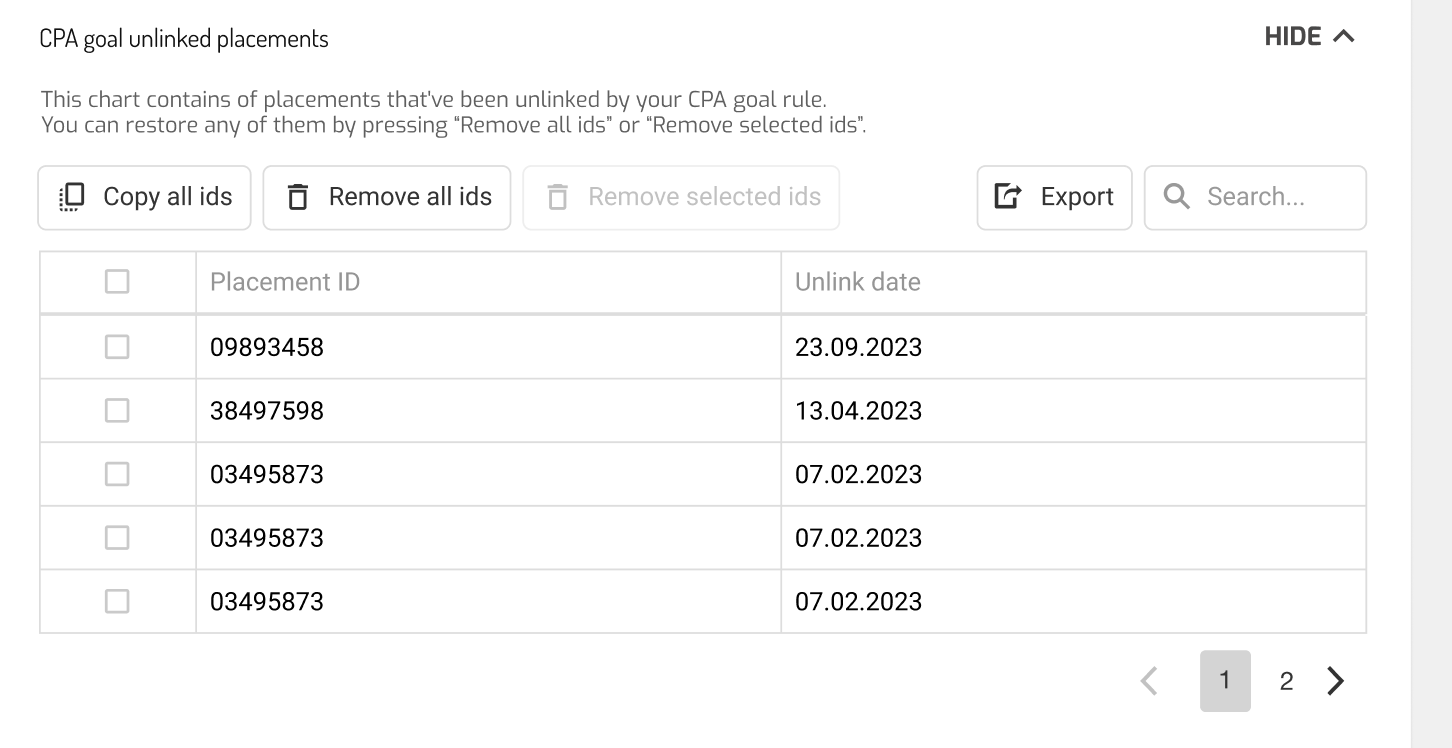The Whitelisting and Blacklisting topic is essential to master if you want your ads to appear on the most rewarding websites. This short guide by Adsterra’s Head of CPM, Mikhail Zhukov, will gently walk you through:
- Basic in-market and in-network definitions
- Fast ways to blacklist sources
- Use cases and best practices of blacklisting
- Main mistakes to avoid
What is a blacklist or blocklist?
In sybersecurity, a blacklist is a set of IP addresses to block. But in digital marketing, it’s a set of ad placements you want to remove from a campaign. You command an advertising network like Adsterra not to show your ads on specific websites because they don’t return desired clicks, conversions, or revenues. These websites will be temporarily blocked, but you can switch on these resources later.
What is a whitelist or allowlist?
You implement whitelisting (allowlisting) to focus spending on high-performing trusted sources (sites or social ad views). You allocate money between placements that have proved to convert well.
An ad placement is a specific space on a publisher’s website. When blocked, the placement will not display your ads even if the website is in your targeting.
Please remember the difference between whitelists in email security and advertising. Whitelisting and blacklisting in email marketing is about being a trusted sender or a malicious actor for your audiences. In advertising, it’s a cost-saving strategy of campaign optimization: you don’t combat spam—you manage the best and the worst performing ad placements within one specific campaign.
Why is it important to filter out placements?
Even one ad space can either boost campaign ROI or drain budgets. It’s especially evident when you launch campaigns tied to sports events or do iGaming ad marketing. Some websites double or triple ad views before major sports matches, and you will not necessarily want to pay for all of these millions of impressions.
Another reason is the cost of a conversion. If you keep receiving impressions that convert poorly on this offer, the CR will bump, provoking an ROI decrease.
In other words, when you remove unnecessary sources, you optimize conversion costs and save money for your true purposes.
Key indicators to check before whitelisting and blacklisting
You can’t exclude publishers without having any proof of its irrelevance. So, which metrics can you monitor to decide on some critical actions?
- CTR (click-through rate). The metric will primarily indicate the quality of ad creatives. But when some placements return poor CTRs against others, this may indicate their irrelevance.
- The CTR to CR (conversion rate) ratio. Placements with numerous clicks and no conversions can be excluded if they spend too much.
- I2C. This metric pulls the percentage of conversions from all impressions on this placement within a selected period.
- Spending. The most obvious indicator is the amount of money spent per placement. However, instead of removing this placement, you may simply lower the bid.
- ROI. Many trackers allow you to monitor ROI per placement (if you carry out the integration first). This metric should not be used for immediate evaluation of placements after a campaign begins. However, it’s the most critical indicator of your strategy’s success in the long run.
The best strategy for excluding or prioritizing traffic
Balance your money metrics (like conversions or deposits) with spending. Poor conversions with big traffic amounts will not necessarily require blacklisting if such placements don’t eat your budgets. Just decrease bids for such IDs and give them a second chance. No results? Blacklisting is the right move!
The whitelisting strategy is even more transparent: selectively increase bids for placements with good CRs, I2C, and ROI indicators. You can download all such IDs and set up a new campaign with them solely.
Blacklisting vs whitelisting use cases and examples
1. Optimize spending, focusing on conversions
When you have tested all traffic slices and collected enough stats about ad placements’ performance, you can leave only those that return profits or exclude the underperformers.
Arrow ad budgets only toward the well-performing sources (remember key indicators?). Whitelisting doesn’t guarantee a significant increase in conversions. But it is likely to do so because you focus your budget on proven placements rather than spreading it among all options.
2. Scale campaigns safely
When scaling, you look for more traffic volumes. With a list of already blocked placements, you can increase payouts or frequency capping with a higher confidence. With a whitelist, you can also scale a marketing campaign by allocating all ad budgets to a selected number of placements, being sure your ads will be shown to the most relevant users.
3. Outbeat competitors within your targets
When whitelisted ad placements receive all your payouts, you can set higher bids to gain the best ad views and win the competition for top-converting users.
4. Avoid showing ads on irrelevant sources
Brand safety is a sore subject for many advertisers. By adding a whitelist, you limit your ad exposure to a specific set of websites that match your brand. Adsterra partners can ask managers to compile such a list of placements.
An alternative example is a temporary cost peak. Some advertisers, whose offers don’t relate to sports or iGaming, can blacklist publishers related to sports streaming during the major events. Why so? Mainly because advertisements on these websites are expensive during live match broadcasts.
The following reason is that sports websites attract loads of viewers, which turns out into millions of ad views you have to pay for. If sports fans are not your primary target audience, why spend money on showing them ads? Secure your budgets with a temporary blacklist.
5. Maintain the overall campaign health
Filtering out underperforming placements or those with massive but irrelevant impressions is a good practice to maintain campaign health. Excluded placements won’t affect your in-network quality metrics: ad relevancy, bidding strategy, and stability. By adjusting placements, you gain scores compared to competitors who keep distilling all sorts of traffic.
How to blacklist and whitelist traffic: practical tips
Let’s now practise in black- or whitelisting. You’ll learn how to find and monitor ad placements, add them to a blacklist, and form a separate whitelist to upload to a campaign.
1. Manage blacklists in active campaigns
Advertisers and affiliates manage all placement IDs on the Adsterra Statistics page. If you have at least one active campaign without whitelists, navigate to this page and select the campaign you want to optimize using the Campaign filter. Click APPLY.
Within a selected campaign, use the Group by → Placement option to enable blacklisting instruments and check campaign metrics for every placement.

Use the State column to block or allow a placement within a campaign, except for whitelist-only ones. Yep, that’s easy! No need to collect and download a CSV.

You can easily navigate between active and excluded(blacklisted) placements using filters. Click the FILTERS icon, select State, and choose the state needed in the Value dropdown:

Cases when you can’t change the placement’s state
Sometimes, the switch on/off option is disabled. Here are the most common reasons for this:
- The placement has already been removed from the campaign
- The placement was removed by the CPA goal optimization rule
- Your manager has excluded this placement because of its inefficiency.
For every case, you’ll get a system message just like this one below:

2. Track placement IDs in CPA campaigns (third-party trackers)
One important note for those of you who use CPA pricing. All CPA campaigns require conversion tracking and postback setup.
Adsterra provides helpful tokens (macros) to pass important data about a campaign’s performance to your tracking tools. Apart from the critical ##SUB_ID_SHORT(action)## token (obligatory for CPA campaigns), you can add the #PLACEMENT_ID## token. As you might have guessed, the latter one will pass the identifiers of traffic sources. You will be informed how every ad placement performs, and then exclude it from a campaign or add it to a list of best-performers.
If you’re not using any trackers, you will be able to check all the IDs on the Statistics page, as discussed earlier.
3. Manually blacklist / whitelist sources while creating or editing a campaign
What if you need to block a set of IDs or run ads on these placements specifically? You can manually add IDs when creating or editing a campaign.
Hit Campaigns → My campaigns and open the campaign you want to adjust. Scroll down till the Advanced Settings section, and hit the CREATE button in the Blacklist/Whitelist section.

Manually enter or paste the IDs, separating them with commas. You can use either a white- or blacklist per campaign at the same time, not both of them. Please note that CPA campaigns only support blacklisting.
4. Bulk blacklisting
In case you need a faster solution, you can use BULK ACTIONS option. From the Statistics page, choose the campaign needed, then select the placements, click BULK ACTION -> Blacklist or Remove from Blacklist.

5. Blacklist traffic using CPA Goal
CPA Goal is a smart tool that optimizes your CPM/CPC traffic by conversions based on the critical parameters. Which ones?
- The critical amount of spending
- The number of conversions or the average cost per conversion you expect with this spending.
CPA Goal will auto-optimize the campaign to match these criteria. If a placement fails to meet your critical KPIs, it will be unlinked. You can access all unlinked placements from your Advertiser’s account. Next, these IDs can be used as a separate blacklist.

6. Quick whitelisting: a hassle-free campaign launch
You can copy campaigns with all their settings but target them to whitelisted sources only. From the Statistics page, select placements needed and click BULK ACTIONS. Select Duplicate Campaign with Whitelist. Confirm your choice, check the settings, and wait for the campaign approval.

Common whitelisting and blacklisting mistakes
We have addressed why marketers need to block poor-performing ads while focusing on high-performing placements. But how about the negative consequences of blacklisting and whitelisting methods? We’ve got a cheat sheet for this topic, as well, called Blacklisting mistakes, so you can save it, too. Now, let’s outline the situations where blocking and favoring ads may not be the best strategy.
1. Blacklisting without analytics
Guesswork aside. Heavy filters without any supportive data—like CTR to CR ratio—lead to unreasonable traffic cutdown, which can negatively affect further results.
2. Over-filtering
Too many ad placements blocked? This may result in low volumes in the future and prevent your campaign from growing. With restricted ad views on your geo, the campaign could stop getting new ad views.
3. Using the same lists for campaigns with different targeting
Some ad networks will offer you ready-made whitelists and blacklists. But such a tactic only works if these lists are customized and tailored to your current targeting and offer. Template whitelists or blacklists can lower performance or simply confuse your data and stats.
4. Removing all sources that don’t send conversions
If you don’t give these sites a chance to convert, you may miss out on potential leads and conversions. What truly works is creating a greylist of placements with decreased bids or customizing (lower) bids for selected IDs via Adsterra’s Custom Bid option.
5. Copying whitelists or blacklists from your past campaigns
Even if you’ve got well-defined bingo lists of placements that scored, they require constant updates. Many factors affect how users convert and ads roll: current competition, seasonality, ad creatives’ quality, and many others.
6. Using the same black/white lists for a group of geos
The same ad placements may perform differently, for example, when you expose ads to, say, US and French audiences. We at Adsterra recommend setting one campaign per country, and the same rule can be applied to whitelisting and blacklisting.
Whitelisting and blacklisting FAQs:
1. How do blacklists in affiliate marketing differ from email blacklisting?
Both affiliate marketing and email delivery services use the blacklisting method to exclude unwanted sources, IDs, or addresses. However, there is one critical difference: removed email addresses are considered to be spam or untrusted sources, while excluded ad placements can be of a high quality but not suitable for your current marketing goals.
2. Are blacklisted sources bad?
In affiliate marketing, a blacklisted source is not a bad or malicious source. It’s just an advertising placement that doesn’t return the desired results. However, in email security, such sources are considered as potential threats (e.g., they send spam messages or malicious software).
3. Which types of blacklists and whitelists exist?
Blacklisting and whitelisting methods are applied are digital security, email delivery, and digital advertising. Security tools utilize a proactive approach to detect potentially unwanted IP addresses and put them in the “blocked lists.” Email automation platforms use blacklists to help users prevent threats and block emails from bad actors. Digital marketing utilizes blacklists as a method of temporarily filtering out ad placements from a campaign. The same for whitelisting: a security measure treats them as lists of legitimate sources or trusted senders (email), while in digital marketing, these are selections of best-performing ad placements.
4. How to add blacklists?
You can remove placements manually from your Statistics page. Filter by critical performance indicators (CTR, Conversions, I2C) and put the State toggle in the OFF position. It’s not time-consuming, and you can get the placement back at any time. Adsterra’s CPA Goal tool is a way to automate the search for low-performing sources. CPA Goal will unlink ad placements that spend too much and fail to deliver the required number of conversions or eCPA.
5. Can I use a whitelist and a blacklist at the same time?
As an Adsterra advertiser, you can’t add a whitelist and blacklist at the same time. It’s because they differ by design. Whitelisting limits the campaign’s traffic to a selected number of ad placements. Blacklisting is excluding specific ad placements from your campaigns, allowing all the rest.
To wrap up
Blacklisting and whitelisting are helpful if used wisely. One of the primary marketing goals you may have is to optimize your current ad spend. By selecting a list of the best ad placements (a whitelist), you squeeze maximum conversions from them without spending on anything else.
Exclusion of low-performing placements secures your ad budgets and allows you to focus on audiences who are more likely to convert. These tools are vital for accurate media buying within any ad network. If you’re not sure about how to apply whitelisting and blacklisting in your marketing, contact Adsterra in the chat. We believe that live communication is as essential as AI-powered tools 😉
